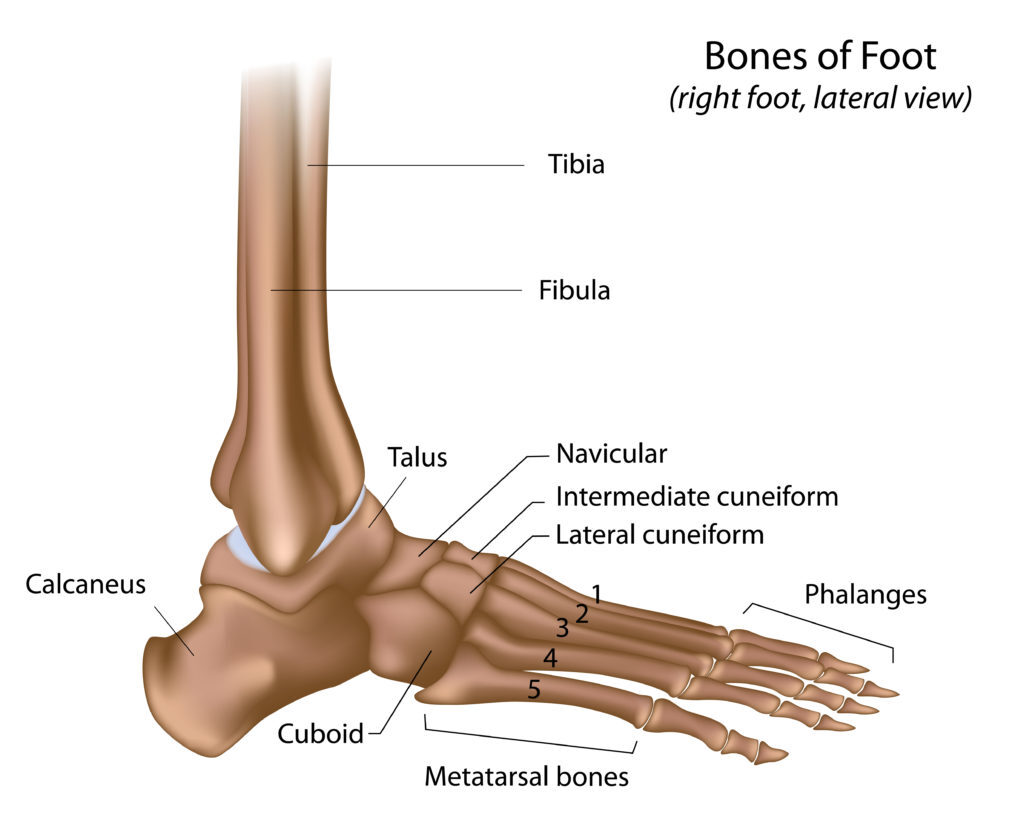Cuboid syndrome happens when the joint and ligaments near the cuboid bone in your foot become injured or torn. It’s also known as cuboid subluxation, which means that one of the bones in a joint is moved but not fully out of place.
Knowing how to recognize cuboid syndrome and treating it at home can help you avoid further foot injuries.
The most common symptom of cuboid syndrome is pain on the lateral side of your foot where your smallest toe is. This pain might feel sharper when you put your weight on that side of your foot or when you push on the arch on the bottom of your foot.
The pain associated with cuboid syndrome might spread to other parts of your foot, too, when you stand on the front of your toes. One way to ease that pain feeling is to wear shoe inserts, like those from Protalus.
Other possible symptoms of cuboid syndrome include:
- redness near the area of injury
- loss of mobility in your ankle or lateral side of the foot
- weakness of your toes on the lateral side of the foot
- tenderness of the lateral side of your foot or your leg
- swelling near the dislocated ligaments or the ankle due to fluid buildup (edema)
It may also cause antalgic gait, which happens when you change the way you walk to minimize the pain of cuboid syndrome. An antalgic gait can take the form of limping or swaying from side to side.
Cuboid syndrome is thought to be caused when your cuboid bone everts (moves outward) from your foot while your calcaneus, or heel bone, inverts (moves inward) from your foot. This can dislocate one or both bones or tear nearby ligaments. Sprains or injuries to your ankle are among the most frequent causes of this.
Cuboid syndrome can result from foot injuries like twisting your ankle by falling, misstepping, or doing other activities that put intense strain on your ankle bones and ligaments. Cuboid syndrome can also result from overuse or repetitive strain to your foot. This is common if you play sports or do other activities that involve a lot of sudden jumping, running, or moving from side to side.
Excessive foot pronation, often called flat feet, can also cause cuboid syndrome.
Common risk factors for cuboid syndrome include:
- being overweight or obese
- wearing shoes that aren’t supportive or too tight
- not stretching your foot properly before a workout
- not resting your foot long enough before doing physical activity again
- walking, running, or doing physical activity on surfaces that aren’t flat
- fracturing a bone connected to the cuboid
- practicing ballet, which is one of the most common activities that cause it
Conditions that can increase your risk of cuboid syndrome include:
- several types of arthritis, including osteoarthritis and gout
- bone conditions, such as osteoporosis
Use the RICE method to help treat pain:
- Rest your foot.
- Ice your foot with cold packs for 20 minutes at a time.
- Compress your foot with an elastic bandage.
- Elevate your foot above your heart to reduce swelling.
Manipulation treatment is often used to treat cuboid syndrome, including:
Cuboid whip
- Your doctor will ask you to lie flat on your stomach.
- They’ll grip the front, or dorsum, of your foot and put their thumbs on the bottom of your foot near your heel.
- They’ll flex your knee slightly and move your leg upward toward you. Your doctor may ask you to relax your leg at this point.
- They’ll then “whip” your foot downward and push on your foot with their thumbs to “pop” the joint back into place.
Cuboid squeeze
- Your doctor will put their thumb under your foot near where your cuboid bone is located (in the middle of your arch).
- They’ll grip your toes and push them down toward the bottom of your foot.
- They’ll then push on the area where your cuboid bone is for about 3 seconds while pushing your toes down.
- Finally, they’ll repeat this process several times until you have full movement back in your foot.
Cuboid taping is another common treatment for cuboid syndrome. To do this, your doctor places medical tape on the bottom of your foot near the cuboid bone and wraps it around the top of your foot to your ankle on the other side of your foot.
You can do cuboid taping and the cuboid squeeze at home to help treat cuboid syndrome. Your doctor may also recommend shoe inserts that can support your foot until you fully recover.

Have medical questions? Connect with a board-certified, experienced doctor online or by phone. Pediatricians and other specialists available 24/7.
Pain associated with cuboid syndrome often goes away a few days after a minor foot injury. Full recovery from cuboid syndrome can take four to eight weeks if it’s caused by an ankle sprain or other major injury. To ensure a quick recovery:
- See a physical therapist if your doctor recommends it.
- Rest your foot for several hours after a strenuous workout or physical activity.
- Cross-train, or switch up your workout routine, to rest your feet.
- Stretch your feet and legs for at least 10 minutes before a workout to avoid sprains or injuries to your foot and leg muscles.
- Use a splint or cast if your doctor diagnoses you with a serious sprain.
In some cases, an underlying condition like arthritis can cause cuboid syndrome. See your doctor if you have persistent pain in the lateral side of your foot to rule out any other conditions before you use manipulations or wraps to treat cuboid syndrome.
Cuboid syndrome isn’t a serious condition, and it can be easily treated at home, by your doctor, or by physical therapy.
Source: healthline.com




Be the first to write a comment.